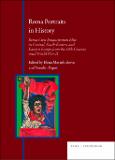Files in this item
Roma portraits in history : Roma civic emancipation elite in Central, South-Eastern and Eastern Europe from the 19th century until World War II
Item metadata
| dc.contributor.editor | Marushiakova, Elena | |
| dc.contributor.editor | Popov, Vesselin | |
| dc.date.accessioned | 2022-05-04T14:30:12Z | |
| dc.date.available | 2022-05-04T14:30:12Z | |
| dc.date.issued | 2022-06-13 | |
| dc.identifier | 276954823 | |
| dc.identifier | a7e777f5-988b-4669-a7bf-b108bdb5d243 | |
| dc.identifier.citation | Marushiakova , E & Popov , V (eds) 2022 , Roma portraits in history : Roma civic emancipation elite in Central, South-Eastern and Eastern Europe from the 19 th century until World War II . Brill, Schöningh , Paderborn . https://doi.org/10.30965/9783657705191 | en |
| dc.identifier.isbn | 9783506705198 | |
| dc.identifier.isbn | 9783657705191 | |
| dc.identifier.other | ORCID: /0000-0001-5333-2330/work/112711481 | |
| dc.identifier.other | ORCID: /0000-0002-6565-8730/work/112711499 | |
| dc.identifier.uri | https://hdl.handle.net/10023/25278 | |
| dc.description | Funding: The open access of this volume is possible thanks to funding from the European Research Council for the Project RomaInterbellum. Roma Civic Emancipation between the Two World Wars, ERC-Advanced Grant no.69466, hosted by University of St Andrews. | en |
| dc.description.abstract | The book Roma Portraits in History is a product of the research conducted within archives and libraries across all countries of Central, South-Еastern and Eastern Europe, where thousands of previously unknown sources have been discovered. From these sources, we have selected the most important ones, which present the visions and activities of the nascent Roma civic elite. One of the key issues on which we seek to find an answer in historical sources concerns the emergence of the Roma civic elite. Within both academia and public perception, it is argued that it is only in the last few decades that a new civic Roma elite has emerged, other than the so-called traditional Roma community chieftains of the past. The materials gathered through the archives, as well as in the Roma press and literature for the period from the 19th century to the beginning of the Second World War (and especially in the interwar period), clearly prove that this is not at the case at all and that, much like other peoples in the region of CSEEE, it was exactly during this time that Roma were also creating their new, national civic elite. As the proposed book clearly illuminates, the Roma elite’s socio-political visions appear as an inalienable part of the history of modern political thought in Europe. | |
| dc.format.extent | 748 | |
| dc.format.extent | 11401138 | |
| dc.language.iso | eng | |
| dc.publisher | Brill, Schöningh | |
| dc.subject | Roma authors | en |
| dc.subject | Portraits | en |
| dc.subject | Gypsies | en |
| dc.subject | Vision | en |
| dc.subject | Emancipaton | en |
| dc.subject | Enlightment | en |
| dc.subject | Interbellum | en |
| dc.subject | DJK Eastern Europe | en |
| dc.subject | MCC | en |
| dc.subject.lcc | DJK | en |
| dc.title | Roma portraits in history : Roma civic emancipation elite in Central, South-Eastern and Eastern Europe from the 19th century until World War II | en |
| dc.type | Book | en |
| dc.contributor.sponsor | European Research Council | en |
| dc.contributor.sponsor | European Research Council | en |
| dc.contributor.institution | University of St Andrews. School of History | en |
| dc.contributor.institution | University of St Andrews. St Andrews Institute for Transnational & Spatial History | en |
| dc.identifier.doi | 10.30965/9783657705191 | |
| dc.identifier.url | https://brill.com/view/title/58333?language=en | en |
| dc.identifier.url | https://discover.libraryhub.jisc.ac.uk/search?isn=9783506705198&rn=1 | en |
| dc.identifier.grantnumber | 694656 | en |
| dc.identifier.grantnumber | 694656 | en |
This item appears in the following Collection(s)
Items in the St Andrews Research Repository are protected by copyright, with all rights reserved, unless otherwise indicated.

